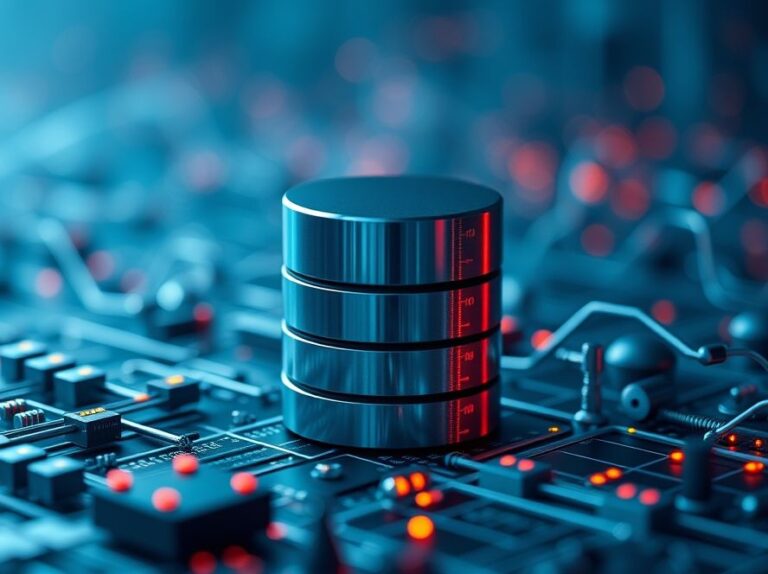Understanding NoSQL: A Comprehensive Definition
NoSQL, short for “Not Only SQL,” refers to a broad category of database management systems that differ from traditional relational databases. Unlike relational databases, which use structured query language (SQL) and a strict schema, NoSQL databases are designed to handle unstructured or semi-structured data, providing greater flexibility and scalability.
The Importance of NoSQL in Modern Applications
In today’s data-driven world, the amount of data generated is overwhelming. Traditional relational databases often struggle to keep up with the speed and volume of data. This is where NoSQL databases come into play. They are particularly well-suited for big data applications, real-time web apps, and scenarios where speed and scalability are crucial.
Key Features of NoSQL Databases
- Schema Flexibility: NoSQL databases allow for dynamic schemas, making it easier to adapt to changes in data structure without extensive migrations.
- Scalability: Most NoSQL databases are designed to scale out by adding more servers rather than scaling up, which can involve expensive hardware upgrades.
- High Availability: Many NoSQL systems are designed to ensure data availability and fault tolerance, often through data replication across multiple nodes.
- Variety of Data Models: NoSQL encompasses several types of databases, including document stores, key-value stores, wide-column stores, and graph databases, each suited for different use cases.
Types of NoSQL Databases
Understanding the different types of NoSQL databases can help you choose the right one for your project:
- Document Stores: These databases store data in documents, usually in JSON or BSON format. Examples include MongoDB and CouchDB. They are great for applications that require flexibility and rapid iteration.
- Key-Value Stores: A simple type where data is stored as a collection of key-value pairs. Redis and DynamoDB are popular examples, ideal for caching and session storage.
- Wide-Column Stores: These databases store data in tables, but unlike relational databases, they allow for variable columns in each row. Apache Cassandra and HBase are examples, suited for handling large amounts of data across distributed systems.
- Graph Databases: Designed for data that is interconnected, graph databases like Neo4j and Amazon Neptune excel in applications involving social networks, recommendation systems, and fraud detection.
Real-World Applications of NoSQL Databases
Many companies leverage NoSQL databases for various applications:
- Social Media Platforms: Facebook and Twitter use NoSQL databases to handle the massive amounts of data generated by user interactions and posts.
- E-commerce Websites: Companies like Amazon use document stores to manage product catalogs, allowing for quick updates and flexible data structures.
- IoT Applications: NoSQL databases can efficiently handle the influx of data from IoT devices, making them suitable for applications in smart homes and connected vehicles.
How to Implement NoSQL in Your Projects
To effectively incorporate NoSQL databases into your projects, consider the following steps:
- Assess Your Data Needs: Determine the type of data you will handle and choose a NoSQL database that aligns with your requirements.
- Setup the Database: Follow the installation and configuration guidelines specific to your chosen NoSQL database.
- Design Your Data Model: Plan how you will structure your data, keeping in mind the flexibility that NoSQL offers.
- Implement Security Measures: Ensure data security through encryption and access control, as NoSQL databases can be vulnerable if not properly configured.
Related Concepts in the NoSQL Ecosystem
Understanding related concepts can enhance your comprehension of NoSQL:
- Big Data: The massive datasets that NoSQL databases are designed to handle.
- Cloud Computing: Many NoSQL databases are available as managed services in the cloud, simplifying deployment and scaling.
- Data Warehousing: While NoSQL is often used for operational data, it can also play a role in data warehousing strategies by handling unstructured data.
Final Thoughts: Embracing NoSQL for Future-Proofing Your Applications
NoSQL databases represent a shift in how we manage and interact with data. By understanding their strengths and applications, developers and server administrators can make informed decisions that enhance performance and scalability. Whether you’re building a small application or a large-scale system, embracing NoSQL can provide the flexibility needed to adapt to changing demands.
As technology continues to evolve, consider how NoSQL databases can fit into your development strategy. Reflect on your current projects and think about where a NoSQL solution might improve efficiency and scalability. Dive into the world of NoSQL and harness its potential for your future applications!









